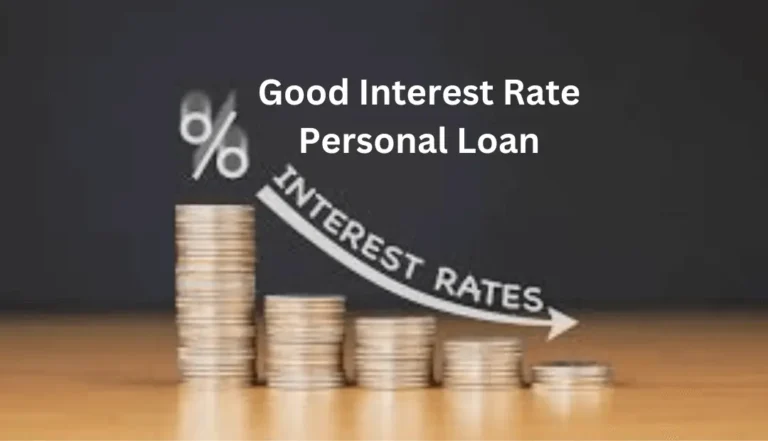Chase Personal Loan Rates Know Which Loan Is The Best For You
Chase Personal Loan Rates
Chase Personal Loan Rates: One of the simplest methods to deal with financial troubles is to take out a personal loan, which can be used for everyday expenses like food and shelter while unemployed or to pay for medical expenses or a child’s education.
However, taking out a personal loan should not be done hastily. You don’t merely take hold of whatever is offered at the time. Because you must understand how to evaluate personal loans to ensure that you can repay what you owe, personal loans operate significantly differently from other forms of credit.
In this post, we’ll go over the key components you should consider looking for in a personal loan as well as how to compare personal loans offered by various Philippine lenders.
Also Read: BillEase Loan: How to Get Cash Loan and Installment Plans Online
Six Items to Consider When Comparing Personal Loans in the Philippines
Whether this is your first personal loan application or not, it’s critical to understand how to evaluate loans offered by various lenders to ensure you’re getting the best deal. Here are a few things to be mindful of.
1. Loan Type
Of course, a lot will depend on your existing financial situation to determine the appropriate personal loan for your needs. You might be searching for the simplest kind of personal loan—one that has monthly interest and requires consistent repayments over a predetermined length of time. Installment loans and debt consolidation loans are two examples of these.
A loan that provides you with more instant access to money can potentially be of appeal to you. You might choose between a personal overdraft, a credit line, or an internet loan if this is what you’re looking for.
Knowing the correct kind of loan is essential if you want to learn how to compare offers. These are the two categories of personal loans available to you.
Unsecured Loans for Individuals
Borrowers who apply for unsecured personal loans are not required to furnish collateral or a guarantee. The majority of unsecured personal loans have higher interest rates and costs due to the lack of a guarantee.
Safe Chase Personal Loan Rates
Secured personal loans, in contrast to unsecured loans, demand collateral from borrowers. For example, your car would be the collateral for a car loan. The lender has the power to seize your collateral if you are unable to make loan payments as agreed. Generally speaking, secured loans come with cheaper fees and interest rates.
2. Annual Percentage Rate and Monthly Flat Rate
The precise amount you borrow is always equal to the principal amount in loans. You are paying your lender interest in addition to the principal as payment for its services when you make your scheduled monthly repayments.
When creating your budget plan, the interest—which is represented in the monthly flat rate—is a crucial consideration. Choose a lender with a low monthly rate if at all possible.
Understanding how the Annual Percentage Rate, or APR, functions should make it simple for you to compare personal loans. The annual percentage rate (APR) is the total of several factors, including your loan tenure and cash rebates, in addition to the loan’s monthly flat rate for a year.
The annual percentage rate (APR) is a highly regulated financial tool used in many nations, and it ought to represent the most complete estimate of your loan costs.
You may wonder how to compare rates on personal loans. Always look for the best APR when contrasting lenders and institutions.
Since the BSP has adhered to a market-oriented interest rate policy since 1983, each bank in the Philippines sets its rates.

3. A Fixed or Modifiable Chase Personal Loan Rates
You should think about the interest rate as your next step. How are rates for personal loans compared? Finding out if the loan has a fixed or adjustable rate is the first step, then.
The interest rate on fixed-rate loans[2] remains constant during the loan term. Because they can project the cost of the money owed until the loan expires, some borrowers prefer this kind of loan.
You can assume that, even if the loan capital lowers over time, a personal loan with a ₱1,000 monthly interest rate for a year should have the same interest rate for the full year based on the fixed-rate loan computation.
The interest rates on adjustable-rate loans, also known as variable-rate or float-rate loans, fluctuate throughout the loan. In certain instances, the interest rate may be low at loan inception and rise in response to market conditions.
Most borrowers dislike adjustable-rate personal loans because of their flexibility because of the possibility of unforeseen fees.
4. Duration of Chase Personal Loan Rates
Each loan that is accepted for you is a legally binding agreement with your lender. Part of that contract is your loan tenure, which is the duration of time you will be making monthly repayments [3].
What occurs then if you make early loan payments? Early loan repayment spares you from lengthy repayment terms. If you have enough money, you can pay it all off at once rather than in multiple monthly installments.
Consider your loan term instead as a rigid repayment plan that you and your bank have decided upon. Therefore, failing to abide by its terms and conditions may have expensive repercussions.
Some lenders and banks will penalize you for repaying your loan too early in addition to late payments. Decide on a loan term, whether it be 12 or 60 months, that best suits your needs and circumstances.
5. Monthly Loan Amount Chase Personal Loan Rates
Do you need assistance comparing two loans? How can you determine which loan is superior? Finding out the monthly repayment amount—the amount you must pay toward the loan each month—is one approach to respond to this.
There are two distinct loan offers in the table below. The loan tenure, monthly payback amount, and total repayment amount of the two are different, as you can see.
You’ll initially want Loan B because it’s shorter and less expensive. On the other hand, Loan A has a ₱2,000 lower monthly payback amount. If you’re on a tight budget, you can buy more than 25 kg of rice with this ₱2,000 or use it to cover your internet and energy bills.
Since you should always take your ability to pay into account, the monthly loan payback is one consideration to take into account when comparing personal loans. The shorter, far less expensive option can appeal to you, but you might find it difficult to afford.
Because of this, you might also have to take out payday loans, which have higher interest rates than personal loans. Put simply, you could incur debt to settle another loan. You would be deeply in debt if this occurred.
6. Total Amount Due
Consider the entire payback amount while comparing loans from other lenders if you want to learn how to do so. Your principal, total interest, and total handling costs are taken into consideration when calculating this sum. This sum should serve as a guide for the overall cost of your loan. If a lender is unable to provide you with this amount right away, you should proceed with caution.
You will be able to determine which loan is more costly and why, as the total repayment amount can provide you with an estimate of the whole cost of the loan.
While each lender may have different loan details, the phrases listed above are some of the most common ones you should look for when comparing personal loans online.
Keep in mind that you specifically need three items when it comes to credit lines or personal overdrafts: the annual interest rate, the minimum monthly payback, and the daily interest that is computed using the yearly rate and the loan principle amount.
Last Words
Obtaining a personal loan involves steps. Understanding various loan features and how to compare personal loans are the first steps. Along with this, you should think about your financial situation both now and for the loan. Make sure you take all of this into account so that you are not taken advantage of by lenders or bad debts.
Now that you are familiar with the fundamentals of personal loans, feel free to use Moneymax’s online comparison tool. Free of cost, compare personal loans available in the Philippines to streamline your financial planning and budgeting process.







